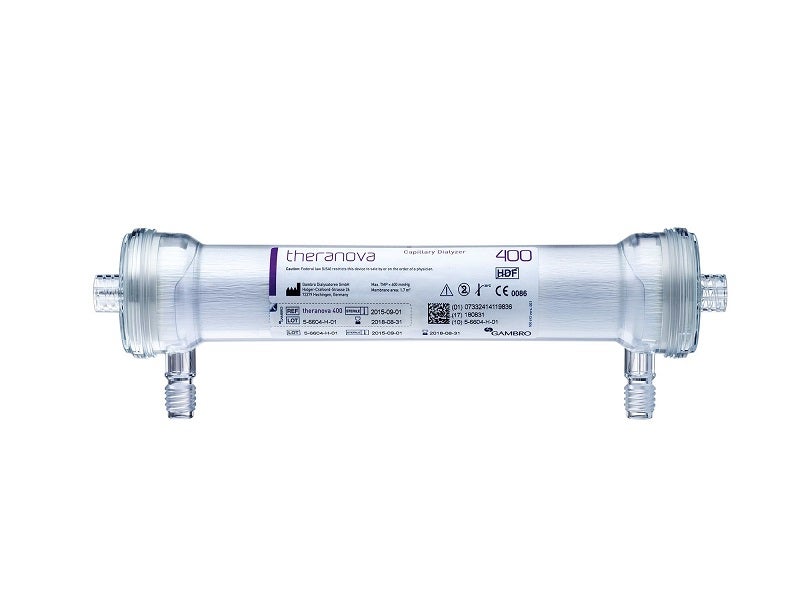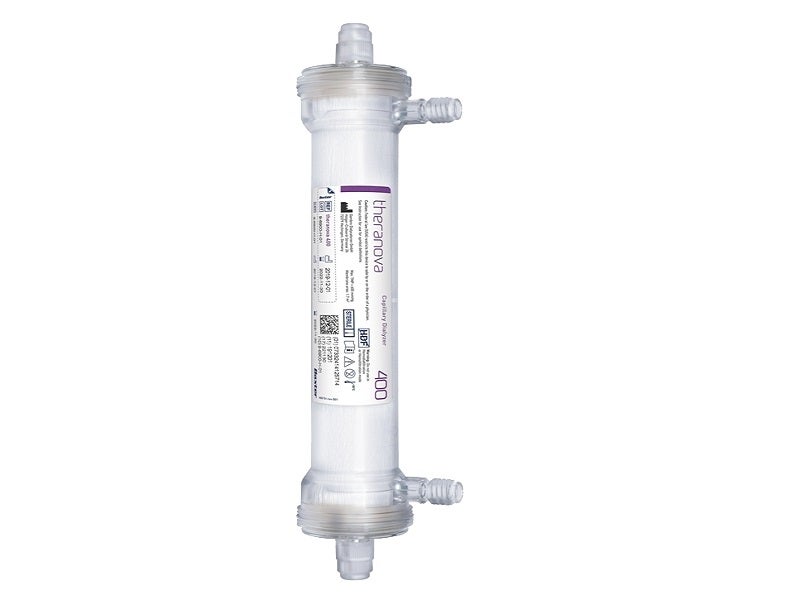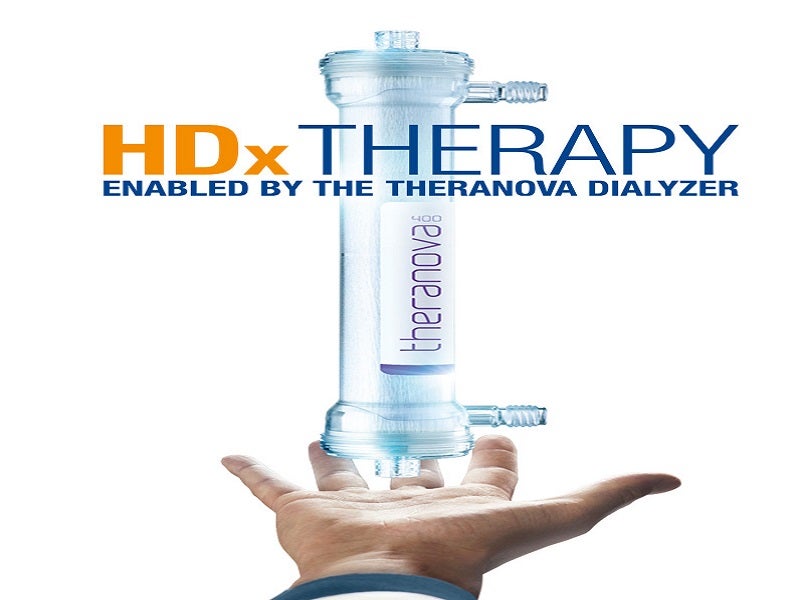Theranova dialyser is a new dialysis membrane developed by Baxter International to provide expanded haemodialysis (HDx) therapy to patients suffering from chronic or acute renal failure.
The dialyser was introduced at the 53rd Congress of the European Renal Association and European Dialysis and Transplant Association (ERA-EDTA) in May 2016.
Theranova received De Novo marketing authorisation from the US Food and Drug Administration (FDA) in August 2020. It is currently being offered in 44 countries across Europe, Latin America and Asia and used in more than 850 clinics worldwide.
Theranova-enabled HDx therapy is intended as a potential alternative to conventional haemodialysis, as its filtration profile more closely mimics the normal kidney.
Details of the Theranova dialyser
The Theranova series primarily includes two types of dialysers, Theranova 400 and Theranova 500.
These dialysers are designed to filter a range of molecules from blood similar to the natural kidney, such as conventional molecules (>500Da to <25kDa) and large middle molecules (25kDa to 45kDa).
Middle molecules may be associated with inflammation and cardiovascular diseases in patients with kidney failure.
The dialyser and set can run a total extracorporeal blood volume that represents less than 10% of the blood volume of the patient. Theranova dialyser operates with standard haemodialysis (HD) systems without the need for fluid replacement. It is not indicated for the haemofiltration or haemodiafiltration (HDF) therapy.
More than 90 independent and Baxter-led or funded studies have been performed on Theranova-enabled HDx therapy to date. The studies assessed a range of clinical and quality-of-life parameters, including the capacity to eliminate conventional and large middle molecules, albumin retention, chronic inflammation and other standard HD therapy side effects.
Theranova medium cut-off (MCO) membrane design and features
The dialyser features innovative Theranova medium cut-off® (MCO) membrane. It is a bisphenol A (BPA) free polyarylethersulfone and polyvinylpyrrolidone blend membrane containing smooth blood-contacting inner layer with hydrophobic or hydrophilic micro-domains.
Micro-domains can minimise the interaction with blood components, resulting in reduced protein adsorption and cell interaction, which can significantly lower clotting risks. Dialyser membrane features an innovative three-layered finger structure asymmetric design combining greater permeability than normal high-flux dialysers with efficient selectivity for large proteins.
The membrane expands the range of separable solute during daily dialysis while retaining a limited level of essential proteins. The unique cut-off and high retention onset profile permit filtration relatively close to that of the natural kidney. The effective membrane area of the MCO membrane is 1.7m2 for Theranova 400 and 2m2 for Theranova 500, while the fibre inner diameter and the fibre wall thickness of the dialysers measure 180µm and 35µm respectively.
Theranova series primarily includes two types of dialysers, Theranova 400 and Theranova 500.
Advantages of the Theranova dialyser
Theranova-enabled HDx therapy uses regular haemodialysis workflow and infrastructure to deliver superior hemodiafiltration performance by eliminating medium and larger middle molecules.
The dialyser blends high permeability and selectivity for uremic toxins (up to 45kDa), thus preserving essential proteins and sustaining albumin levels during therapy. It provides higher clearances and intradialytic reduction ratios than standard haemodialysis at usual blood flow rates.
Removal of small and conventional middle molecules with Theranova dialysers is equivalent to high-volume HDF and allows more larger middle molecules to be removed. Controlled albumin removal between 1gms and 4gms occurs in each session.
Theranova’s innovative MCO membrane offers greater permeability, improved selectivity by size exclusion and performance closer to the natural kidney. The dialysers are compliant with any HD display and with the fluid quality of the normal dialysis.
Theranova clinical trial
Baxter performed a randomised controlled clinical trial to test the safety and efficacy of HDx therapy enabled by Theranova in the US.
In the study, 172 patients on haemodialysis were randomised to receive dialysis with either Theranova 400 (a medium cut-off dialyser) or ELISIO-17H (a high-flux dialyser) for 24 weeks.
The study’s primary goal was to measure the reduction ratio for the removal of free lambda (λ) light chains (large middle molecule removal) without lowering albumin levels at the end of the therapy.
Results from the study showed improved removal of large middle molecules in patients as exemplified by λ free light chains with the Theranova 400 dialyser compared with the similar-sized ELISIO-17H, while retaining serum levels of albumin.
Baxter presented new data from a study of Colombian dialysis patients at the 58th ERA-EDTA Congress in June 2021. The data demonstrated that expanded haemodialysis (HDx) treatment delivered by the Theranova dialyser may reduce cardiovascular events in patients by 35% compared with high-flux haemodialysis. The results also showed that the therapy may lead to 18% lower hospitalisation rates.
The large, multi-centre, retrospective study involved analysing more than 1,000 adult dialysis patients being treated at Baxter Renal Care Services clinics in Colombia.










